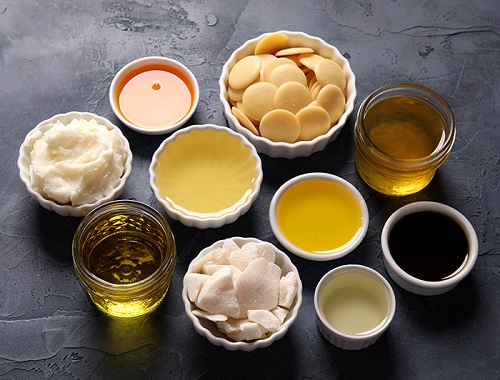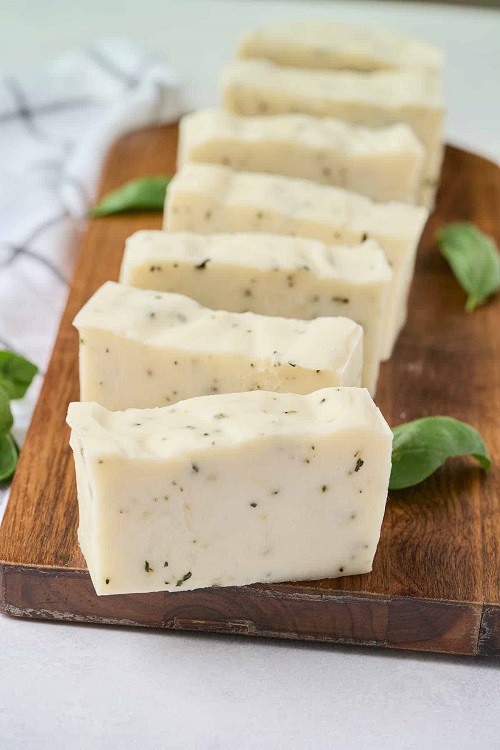Nourish and pamper your skin with these curated DIY Castor Oil Soap Recipes, perfect for all skin concerns!
Renowned for its nourishing and moisturizing properties, castor oil takes center stage in crafting luxurious handmade soaps. This article presents a range of nourishing DIY Castor Oil Soap Recipes that will leave your skin feeling soft, supple, and rejuvenated!
Discover the Benefits of Castor Oil Soaps here
What are DIY Castor Oil Soaps?
DIY Castor Oil Soaps are homemade soaps infused with castor oil, known for its hydrating and nourishing properties. The recipes often blend castor oil with other natural ingredients, creating a luxurious soap that caters to various skin needs. Rich in ricinoleic acid, castor oil enhances skin elasticity and offers anti-inflammatory benefits.
Crafting DIY Castor Oil Soaps allows for customization, enabling you to create a product that aligns with your specific skincare preferences.
Get the Best Castor Oil Buying Guide here
DIY Castor Oil Soap Recipes
1. Classic Castor Oil Liquid Soap Recipe
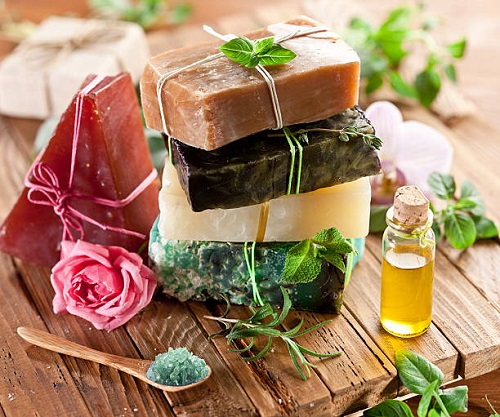
Combining castor oil, coconut oil, and olive oil, this liquid soap hydrates and nourishes the skin. Castor oil’s ricinoleic acid maintains skin elasticity, coconut oil offers antibacterial effects, and olive oil’s oleic acid moisturizes. Together, they provide a gentle cleansing experience.
Ingredients:
- 20 grams of castor oil
- 20 grams of coconut oil
- 20 grams of olive oil
- 20 grams of potassium hydroxide
- 300 grams of distilled water
2. Cold Process Castor Oil Soap Recipe
This recipe includes the same ingredients but is blended in a cold soap-making process. It nourishes castor oil’s hydrating properties through its ricinoleic acid content. Olive Oil provides anti-inflammatory effects with oleuropein and hydroxytyrosol compounds, while coconut oil’s medium-chain fatty acids contribute to a deep cleansing effect.
This DIY Castor Oil Soap Recipe offers a luxurious and gentle soap that cleanses the skin without stripping it of its natural oils.
Ingredients:
- 20 grams of castor oil
- 20 grams of olive oil
- 20 grams of coconut oil
- 20 grams of sodium hydroxide
- 50 grams of water
3. Nourishing Olive Oil and Castor Oil Soap Recipe
This nourishing recipe features castor oil, olive oil, coconut oil, and shea butter. Castor Oil contributes anti-inflammatory properties with ricinoleic acid. Olive Oil supplies antioxidants that promote skin health. Coconut Oil adds a touch of antibacterial protection, while Shea Butter, rich in vitamins A and E, nourishes and conditions the skin.
This combination results in a rich and soothing soap that leaves the skin feeling soft and rejuvenated.
Ingredients:
- 20 grams of castor oil
- 20 grams of olive oil
- 30 grams of coconut oil
- 30 grams of shea butter
- 30 grams of lye
- 60 grams of water
4. Herbal Castor Oil Soap Recipe
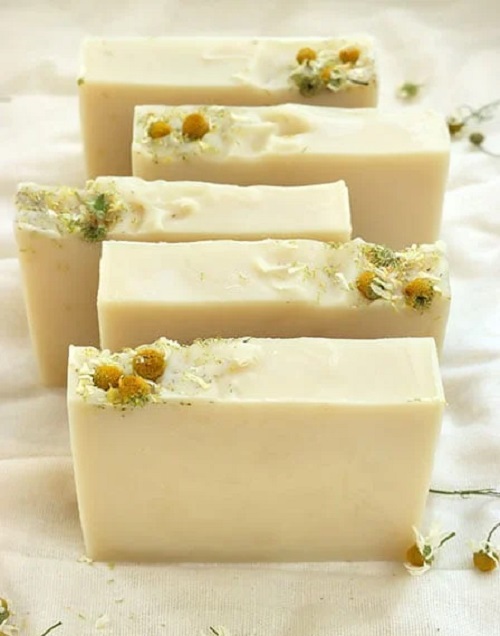
This herbal blend incorporates castor oil, coconut oil, olive oil, shea butter, and calming herbs like lavender. Castor and olive oils nourish, coconut oil cleanses, shea butter moisturizes, and herbs add a refreshing scent, forming an aromatic soap for both skincare and sensory pleasure.
Ingredients:
- 15 grams of castor oil
- 25 grams of coconut oil
- 30 grams of olive oil
- 15 grams of shea butter
- 30 grams of lye
- 60 grams of water
- 10 grams of your favorite dried herbs (e.g., lavender, chamomile)
5. Vegan-Friendly Castor Oil Soap Recipe
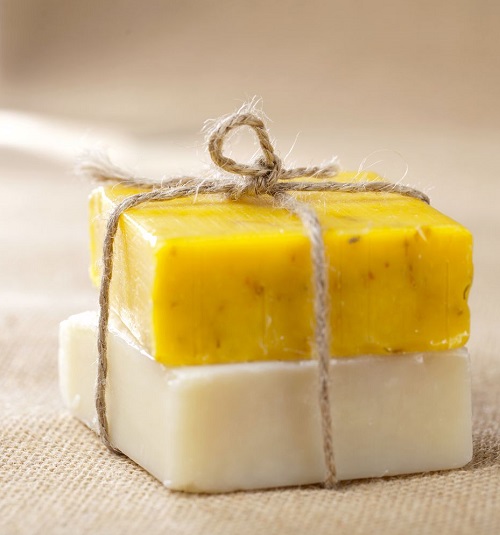
This vegan-friendly recipe supports healthy skin by combining castor oil, coconut oil, and sunflower oil. Castor oil offers hydration, coconut oil cleanses, and sunflower oil’s vitamin E rejuvenates.
The result is an ethical soap that aligns with vegan principles while providing moisturized skin.
Ingredients:
- 20 grams of castor oil
- 25 grams of coconut oil
- 30 grams of sunflower oil
- 20 grams of sodium hydroxide
- 50 grams of water
Learn about the Benefits of Castor Oil here
How to Make DIY Castor Oil Soaps?
Making these DIY Castor Oil Soaps is easy and includes the same procedure. Here’s a step-by-step guide to it:
- Mix Lye and Water: In a well-ventilated area, carefully mix lye (sodium hydroxide) with water, taking necessary safety precautions.
- Blend Oils: In a separate container, combine the required oils per your chosen recipe— castor oil, coconut oil, and olive oil.
- Combine Lye Solution with Oils: Gradually add the lye solution to the oil mixture, stirring continuously.
- Monitor Thickness: Observe the mixture as it thickens to the desired consistency. The classic castor oil liquid soap recipe requires a heat-resistant container when mixing the potassium hydroxide solution.
- Add Specific Ingredients if Necessary: Depending on the recipe, you might add specific ingredients at this stage. For the herbal castor oil soap recipe, stir in dried herbs like lavender or chamomile, ensuring even distribution.
- Pour into Mold: Carefully pour the soap batter into a soap mold.
- Cure the Soap: Allow the soap to cure for 4-6 weeks for optimal quality. For liquid soap, allow it to cool and store it in a convenient pump dispenser for daily use.
- Cold Process Variation: If following the cold process method, like in the cold process castor oil soap recipe, follow the same basic steps but maintain all ingredients at room temperature.
- Vegan-Friendly Variation: For a vegan-friendly recipe, make sure to use vegan-approved oils like sunflower oil.
Is Castor Oil Vegan? Learn here
Important Safety Measures
1. Use Protective Equipment
- Wear rubber gloves to protect your hands from the caustic nature of lye.
- Use safety goggles to protect your eyes from splashes.
- Wear long sleeves and an apron to protect your skin.
2. Handle Lye with Care
- Lye fumes can be irritating, so always work in a well-ventilated space.
- Use containers resistant to caustic substances, such as glass or heat-resistant plastic.
- If lye comes into contact with your skin, rinse immediately with plenty of water.
3. Measure Ingredients Accurately
- Accurate measurements are vital for a successful recipe, so use a digital scale for weighing ingredients.
4. Monitor Temperature
- Especially with liquid soap recipes, monitor the temperature to prevent overheating, which can alter the soap’s characteristics.
- Consider using a thermometer to keep track of the temperature of the oils and lye solution.
5. Be Mindful of Allergies
- If you or the intended user has skin sensitivities or allergies, be sure to understand all the ingredients you’re using.
- Before using a new soap, especially with essential oils or herbs, test a small area of your skin to check for reactions.
Use Safe Practices with Equipment:
- Ensure that all utensils and equipment are clean and reserved for soap-making only.
- Do not use aluminum containers or utensils, as lye reacts with aluminum, creating hazardous fumes.
Discover the Side Effects of Castor Oil here
Key Takeaways
Nourishing your skin becomes a creative and accessible endeavor with DIY Castor Oil Soap Recipes. These recipes offer various options to suit different needs and preferences, from vegan-friendly to herbal blends.
Whether new to soap-making or an experienced artisan, you can enjoy crafting luxurious, gentle soaps that align with ethical considerations, promote skin health, and provide unique gift opportunities.
FAQs
1. Is Castor Oil Soap Suitable for Sensitive Skin?
Yes, Castor Oil Soap is generally well-tolerated by sensitive skin types. Its mild and gentle nature can soothe and nourish sensitive skin without irritating it.
2. Can I use Castor Oil Soap for my Face and Body?
Absolutely! Castor Oil Soap is versatile and safe to use on the face and body. Its natural properties can benefit the skin all over.
3. Can I Add Essential Oils to Customize the Scent of My Castor Oil Soap?
Yes, you can enhance the aroma of your Soap by adding the essential oils of your choice. Just ensure to use skin-safe essential oils and follow proper dilution guidelines.
4. How Long Does DIY Castor Oil Soap Take to Cure Before Using It?
Making Castor Oil Soap using the cold process method typically requires 4-6 weeks of curing before it’s ready for use.
5. Can I use Castor Oil Soap for Specific Skin Conditions like Acne or Eczema?
Castor Oil Soap’s moisturizing and anti-inflammatory properties can benefit skin conditions like acne and eczema. However, consult a dermatologist if you have severe or chronic skin conditions.

